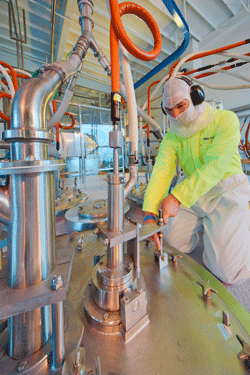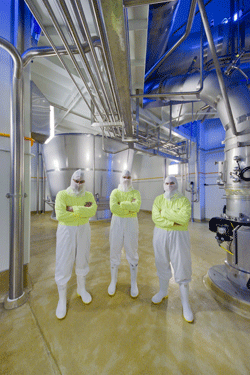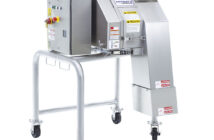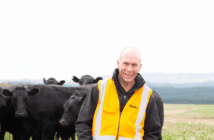New Zealand’s second largest dairy cooperative commissions a new nutritional plant in Hokitika to meet international customer demand for infant nutritional formula.
The new multi-million dollar plant began commercial production in February and already has committed customers, taking Westland from being a dairy ingredient supplier to a new entrant in the infant nutrition sector.
In technical terms, the new Westland nutritional plant is a state-of-the-art Tetra Pak system comprising a wet mix batching system including wet and dry macro and micro ingredient handling areas, oil dosing, vacuum mixing, homogenisation and pasteurisation.
This wet mixing approach ensures a high degree of product composition control and consistency, which is crucial for customers.
Traceability of all ingredients is enabled through detailed logs and batch control software. The products are dried through evaporation and spray drying, and packed in a newly created high-hygiene area, which staff enter via a second redline zone and wear full coverage hat and facial masks in addition to the usual overalls, hats and boots.
These measures reflect the elevated levels of hygiene and control required beyond Westland’s already strict quality standards.
Westland’s production manager Bernard May says that the paediatric nutritional formula sector is strategically important to Westland and that the plant was created in response to customer demand.
“In Asia there is double digit growth for infant formula. This project had an extremely tight deadline – driven by our customers in Asia. We commissioned the plant in September last year and began commercial production at the end of January this year,” Mr May says.
“The performance of the plant is extremely good and the powder itself is very good too. We began trial production and sent samples to customers and received great feedback.”
Mr May says that it was a huge advantage to work with Tetra Pak Oceania, which has extensive experience in spray drying technology and innovation.
“Tetra Pak had the overall contract, but we were also able to offer work to a number of West Coast companies. We also made sure we put time and resources into staff and training, making use of experienced contractors and consultants who have been through nutritional plant commissioning before. It’s been a fantastic effort from everyone involved. We have successfully commissioned the plant – we have product in the warehouse, customers visiting, auditing and ordering, and commercial production has commenced.”
Westland chief executive Rod Quin says – “To achieve success in the nutritionals market we have to have the sophisticated technology required, which is where the investment in the nutritionals plant comes in. It’s a huge step for us to take, but one that expresses confidence in the future of Westland as a company and dairying as an industry.”
Noel Ayre, managing director of Tetra Pak Oceania says – “Our team enjoyed working with Westland, to install our superior infant formula wet mix plant technology, which allows Westland to produce a quality product.”
“Customers are signing up for the forward season,” says Mr May.
“Soon the production plant will be full for the next season [beginning in August]. We will then consider options for expanding production capacity beyond that.”
The first new part of the nutritionals plant consists of a new materials handling facility to assist in the receipt of ingredients, staging/depalletising, the tipping of dry ingredients required to make up a specific formulation, and the dispatch of finished product.
Dry ingredients can be transported via a dual 25kg bag tipping line, or the bulk bag line, into 15m3 ingredients bins.
Liquid skim milk is then combined with the dry ingredients in the Almix tank.
The Almix provides high-shear mixing under vacuum at around 50 degrees Celsius to ensure both the macro and micro ingredients are homogenous and fully hydrated.
To maximise the mixing and hydration process the mix is circulated for approximately 1.5 hours.
The correct ratio of macro and micro dry ingredients is precisely measured into the liquid ingredients and extensive testing and revalidation of the formulation takes place.
Once this cycle is complete the mix (of 30m3) is chilled and heat treated before being placed in one of three 90m3 silos ready for evaporation and drying in the existing Dryer 6.
Powder is directly packed via a dedicated Avapac LI 800 packing line into 25kg bags. Product categories for infant nutritionals typically relate to the age of the consumer base.
For example, infant formula is for babies aged zero to six months, follow on formula is for babies aged six to 12 months and Growing Up Milk is for youngsters aged 12 months plus.
Within these three categories is an array of specific formulations tailored to meet the needs of the customers.
Formulations containing different ratios of oils, proteins and carbohydrates can vary considerably depending on their end use. Less than two grams of certain ingredients is added to a 30,000 litre mix for a particular specification.






























































































